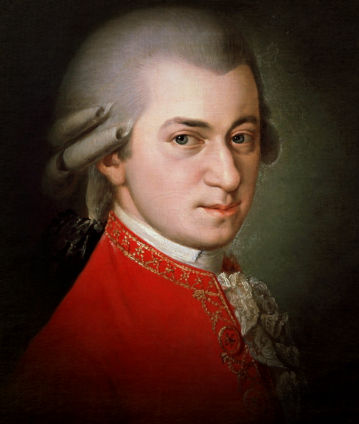Wolfgang Amadeus Mozart
Compositeur
On a souvent tenté d’approcher le miracle Mozart sous l’angle du paradoxe. Sa musique est « trop facile pour les enfants et trop difficile pour les adultes », a dit un jour le pianiste Arthur Schnabel, qui faisait par là allusion au délicat équilibre entre légèreté et complexité, élégance et profondeur, que doivent trouver les interprètes.
Dès son plus jeune âge, Mozart stupéfie un public international par ses dons de violoniste et surtout de pianiste. En compagnie de son père et de sa sœur, le petit garçon effectue un périple de trois ans à travers l’Europe occidentale qui le met très tôt en contact avec les différents styles de l’époque. Contrairement à d’autres enfants prodiges, son évolution se déroule sans interruption et le conduit à une maîtrise de tous les genres probablement unique dans l’histoire de la musique : sonate pour piano, musique de chambre, concerto de soliste, musique sacrée, symphonie. La clé de l’œuvre de Mozart est toutefois à chercher dans ses compositions pour la scène. Il y fait preuve d’une vivacité du geste et d’une perméabilité à la moindre émotion humaine qui se retrouvent dans ses œuvres instrumentales. Au cours de sa brève existence, Mozart est passé du statut de valet-musicien au service de la cour de Salzbourg à celui d’artiste indépendant à Vienne. Le mythe veut qu’il ait été pauvre et son talent méconnu ; en réalité, c’est la raréfaction des commandes qui a fait qu’il ne pouvait plus financer son train de vie dispendieux. Le style Mozart des Berliner Philharmoniker a beaucoup évolué depuis les années 1990 grâce à leur collaboration avec Nicolas Harnoncourt et d’autres experts en interprétation historiquement informée. Le chef principal Claudio Abbado et son successeur Sir Simon Rattle se sont montrés eux aussi ouverts aux leçons de la pratique d’exécution historique. Rattle a donné avec l’orchestre des représentations d’Idomeneo, Così fan tutte et La Flûte enchantée ainsi que la trilogie des dernières symphonies en ouverture de la saison 2013-2014.